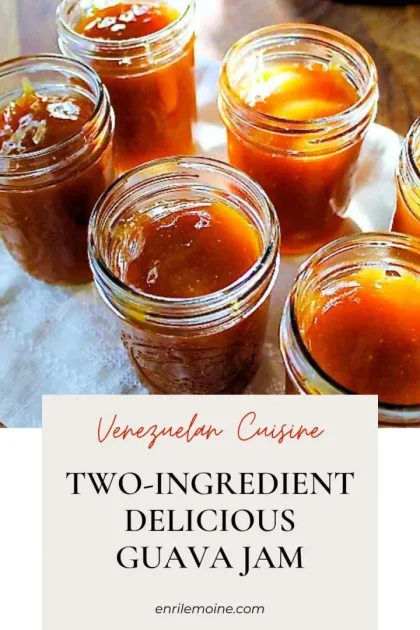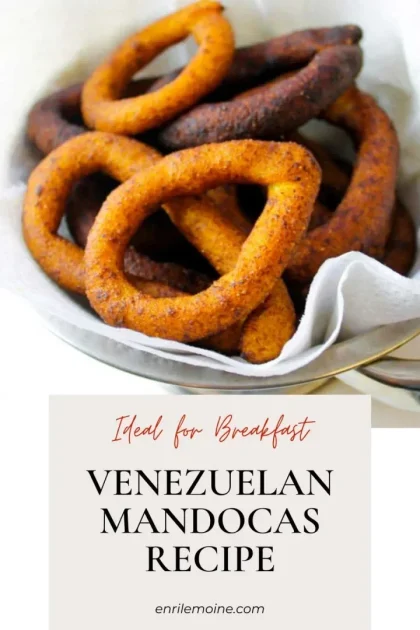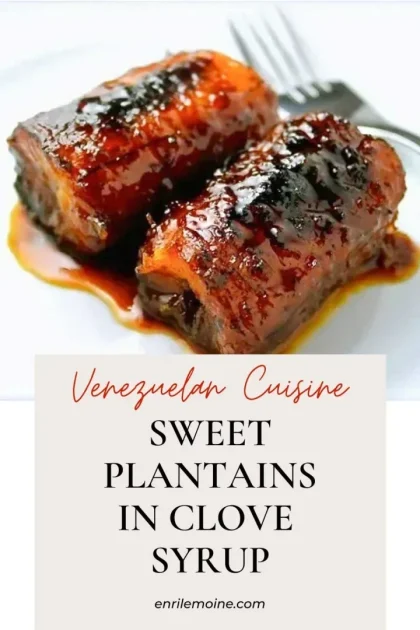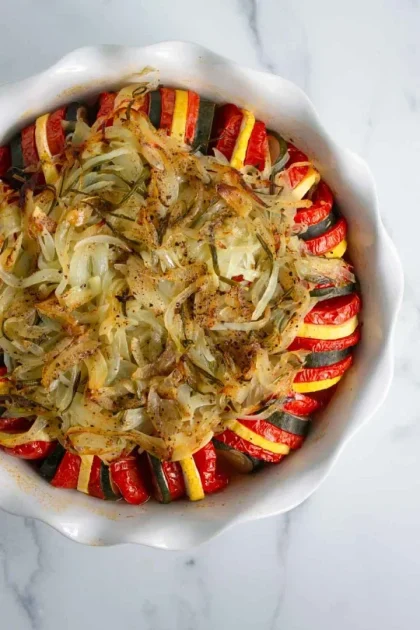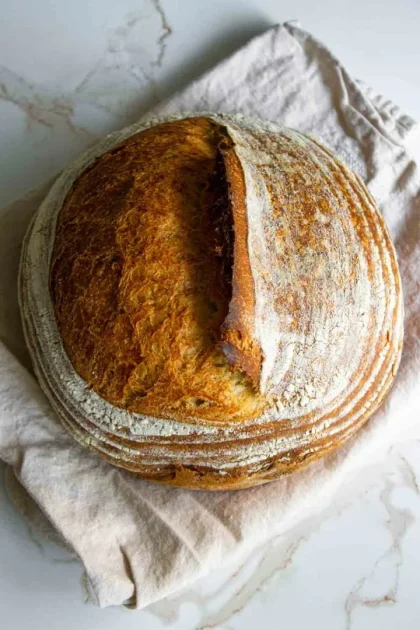The first thing I have to say is that these are NOT my hallacas. They are my dear Chuky Reyna’s hallacas. And they are by far the best hallacas I’ve eaten in my life.

They are replicas of the ones made in Caracas by Mrs. Reyna, mother of my dear and remembered Gustavo J. Reyna (the best and last boss I had and certainly the most indulgent of all), of Chuky and seven more children, and grandmother of, among many other grandchildren, Isabella Reyna, with whom I also had the pleasure of working a few years ago.
María Josefina Parés de Reyna had the secret of the perfect Caracas-style hallaca’s flavor. The very thin and soft dough did not crack. The stew, of pork and chicken, had the sweet touch that we Caraqueños like so much and that comes from sweet pepper, papelón (piloncillo, unrefined whole sugar cane sweetener) and sweet cooking wine; and it also had a delicate touch of acidity, furnished by the exact amount of vinegar and mustard pickles.
A year ago, I met with Chuky in Miami for work matters. Of course we ended up talking about food and she invited me to eat hallacas.
Undisputed heir to the touch of Mrs. Reyna, whom she helped knead the hallaca dough when she was just four years old, Chuky also inherited her mother’s generosity.
And just like Pimpi —as Mrs. Reyna was called by her grandchildren—, who once surprised everyone with some cooking classes she taught so that people could learn to make hallacas like hers, Chuky invited me to be part in the making of her own ones. You can’t imagine what a privilege that was.
In Venezuela, there are as many hallaca recipes as families (maybe one day I’ll encourage myself to make mine again and post the recipe here).
And the taste and flavor of these tamales wrapped in plantain leaves, undisputed protagonists of the Christmas table, are a secret that passes from generation to generation and is usually not written anywhere.
In return for her generosity, I offered Chuky to write the recipe, which for the first time is now “ink on paper” to the delight of many.
The hallaca has three very important components, namely: the stew, prepared the day before and left to rest uncovered overnight at room temperature; the dough, which is made early on the day when the hallacas are “ensambled”; and the plantain leaves on which the dough is spread, and which make the wrapper of this tamal that we Venezuelans call “multi-sapid” for the amount of flavors that harmonize in one dish.
The best thing about hallacas is that you make them as a family thing: sipping Ponche Crema, listening to aguinaldos(carols) and telling tales. The table where everything is prepared is covered with a plastic tablecloth so that nothing is stained with annatto yellow. Some help cutting up the ingredients for the stew. Others lend a hand with the kneading. Others are in charge of cleaning the leaves. Others prepare the “ornaments”. Something EVERYBODY does is sample the stew, in an empirical-collective effort to ensure that, year after year, the hallacas have the same flavor.
I hope you enjoy this recipe. Truth to be told: these hallacas are magnificent.
Thanks Chuky for the treasure of your friendship.
Pork and Chicken Hallacas | Ingredients for 20 hallacas
For the stew
3/4 cup of lard
6 pounds (about 3 kilos) of pork leg, clean and diced in half-inch (just over one centimeter) cubes
3 ½ cups of onions, chopped
6 cloves of garlic, minced
1 cup of scallions (green onions), chopped
2 cups of leek, chopped
2 ½ cups of red bell pepper, deveined, seeded and chopped
6 ajíes dulces (sweet peppers), deveined, seeded and chopped
2 ½ cups of tomatoes, seeded and chopped
8 ounces of Worcestershire sauce
1/3 cup of red wine vinegar
½ cup of pickles in mustard
1 cup of cooking wine (Muscat type)
1 cup of papelón (panela or piloncillo), grated or chopped
Sea salt
Freshly ground black pepper
Cumin
1 hen, cut into pieces
1 cup of hen broth
2 tablespoons of tomato paste
Preparation of the stew
1. In a food processor or a blender, blend the onion, garlic, chives, leek, bell pepper, sweet peppers and tomato.
2. In a large saucepan, over medium heat, place the lard and liquefied seasonings with the pork, Worcestershire sauce, pickles, wine, papelón, salt, pepper and cumin, and cook for about 4 hours, stirring frequently, until the meat is completely cooked. To see if the meat is ready, remove a bit and shred it. If the meat is white, it is already done.
3. Meanwhile, in a pressure cooker with 2.5 liters of water, cook the pieces of chicken for 45 minutes, until the meat is tender.
4. Remove the hen from the pot and let it cool. Once cooled, shred the meat and reserve 40 strands of about 1 inch (2.5 cm) long to be used as garnish for the hallaca.
5. Add a cup of hen broth to the pot with the stew, along with the shredded chicken meat.
6. Turn off the stew and let it stand overnight uncovered and at room temperature.
7. The next morning, add the tomato paste and taste the stew and correct the seasoning.
For the dough
½ pack of precooked corn flour, the one used to make arepas.
1 cup of lard (you can substitute it with corn oil but, in my opinion, the taste that lard gives is irreplaceable)
3 tablespoons of onoto (achiote or annatto) seeds
1 cup of red bell pepper juice, strained
1 1/2 cups of water
1 cup of melado de papelón (panela or piloncillo syrup)**
Fine sea salt
Preparation of the dough
1. In a pot or cauldron, cook the lard with the onoto, over medium heat until it starts to boil. Remove from heat and let cool. While it is still warm, strain and discard the onoto seeds.
2. Put the bell pepper juice and the corn flour in the bowl of a mixer with a kneading blade and start kneading.
3. Gradually add the onoto-colored lard and continue kneading.
4. Add the melado de papelón, salt and water and continue kneading until you get the characteristic consistency and flavor of Caracas style hallacas dough.
5. Once all dough ingredients have been added and the dough has a soft and flexible consistency, place it in a container where you can knead comfortably. This step is not strictly necessary, except so you can check manually that there are no lumps and the dough has the desired softness and elasticity.
6. The dough is ready when it is firm despite its softness, it does not stick to your hands and, when you make a ball it has a smooth and shiny appearance. Once the dough has that consistency, make 20 balls of about 2 inches (5 cm) in diameter (the size of a large lemon).
For the leaves
For 20 hallacas you will need about 7.5 pounds of roasted plantain leaves (which are available at Latino products stores). It is preferably to have too many leaves than too few.
Preparation of the leaves
1. Thaw leaves in their package, when you start making the guiso.
2. Once the leaves are thawed, clean them with a damp kitchen towel and divide them, according to their size, in 20 large spreading sheets, about 12×14 inches (30×34 cms) approximately; 20 middle wrapping leaves, about 10×12 inches (25×30 cms) and 20 small leaves or “belts”, of about 4×10 inches (10×25 cms) with which the hallaca is “belted”.
3. Once classified, cover the leaves with wet kitchen towels so they do not dry out.
For garnish
40 1-inch (2.5 cm) long hen meat strands
40 small manzanilla olives, stuffed with pimento
40 black raisins
80 golden raisins
40 almonds, blanched and peeled
Preparation of the hallacas
1. Cover the surface where you are going to work with a plastic tablecloth, a disposable one preferably.
2. For the spreading of the hallacas have the following at hand: a rolling pin, a thick plastic, about 12×12 inches (30×30 cm), twine (kitchen string) to tie the hallacas, and scissors to cut the twine.
3. On the table, arrange the leaves by size, the balls of dough, the guiso and the garnishes.
4. Place a ball of dough on the base or spreading plantain leaf, and place the plastic over the ball. Spread the dough with the help of the roller until you have a circle of about 10 inches in diameter (25 cm) and 1/8 inch (3-4 mm) thick.
5. Remove the plastic and place a heaping spoonful of stew in the center.
6. Garnish with 2 strands of hen meat, 2 olives, 2 black raisins, 4 golden raisins and 2 almonds.
7. Carefully fold the hallaca joining two of the sides of the spreading leaf. Make a new fold in those two ends, and fold downwards. Fold the other two ends of the leaf downwards.
8. Place the hallaca folds down onto the wrapping sheet, which should be placed diagonally, and wrap it as if it were a package, first joining one extreme with the opposite one, and then simultaneously the remaining two.
9. With the belt sheet, belt the hallaca and tie it with twine as shown in the video.
10. Once all the hallacas are ready, they should be cooked as indicated below.
Cooking the hallacas
1. In a large pot, about 12 liters (12.68 qt) bring some 6 liters of water to a boil over high heat.
2. Once the water is boiling, reduce heat to medium, and cook the hallacas for 50-60 minutes.
3. Remove the hallacas from the pot and place them on a tray to drain.
4. Generally hallacas are left overnight on the tray to make sure they are completely cool before storing them in the refrigerator.
5. Before serving, heat the hallacas in boiling water for 15 minutes.
6. These hallacas can be preserved in the refrigerator for up to a month.
(*) With Chuky Reyna’s recipe.
(**) To make melado de papelón combine the papelón with 1/4 cup of water in a small saucepan. Set over medium heat, bring to a simmer and continue cooking for 5 minutes. Then, set aside to cool.
Latest posts by Enri (see all)
- 2-Ingredient Venezuelan Guava Jam Recipe - June 26, 2025
- Venezuelan Mandocas Recipe – A Sweet & Savory Ripe Plantain Treat - June 19, 2025
- Sweet Plantains in Clove Syrup (Venezuelan Plátanos en Dulce) - June 14, 2025
